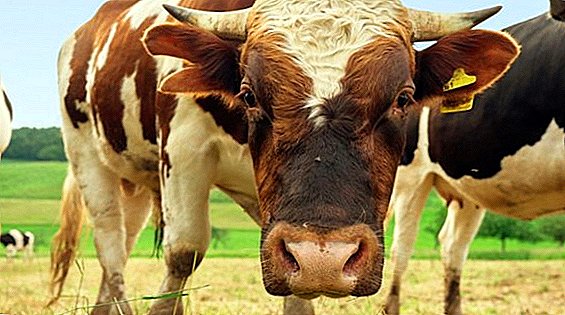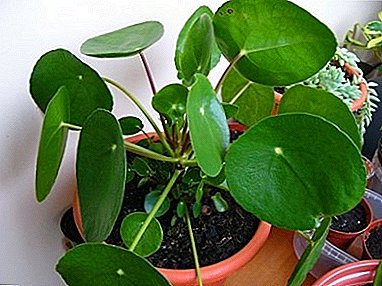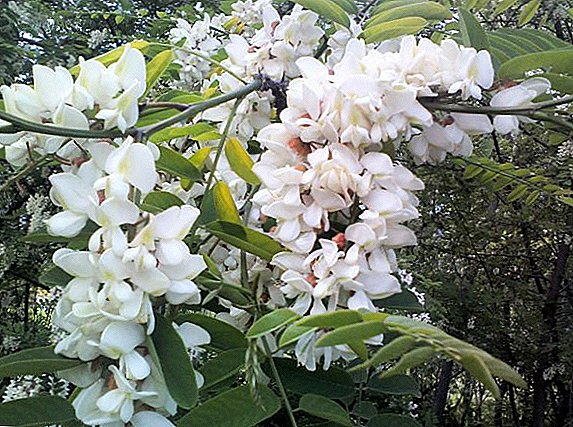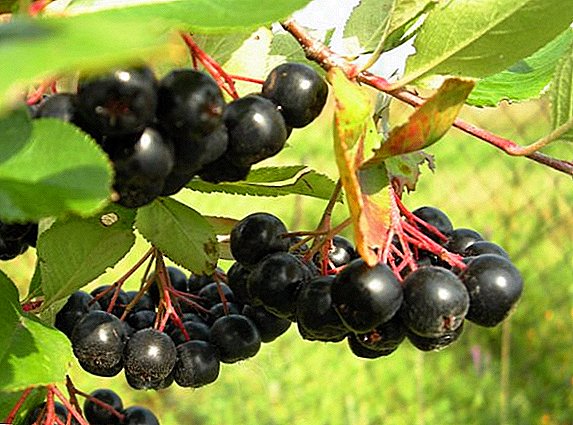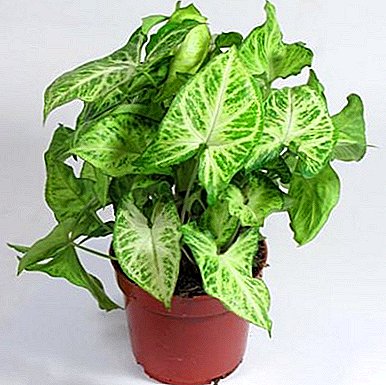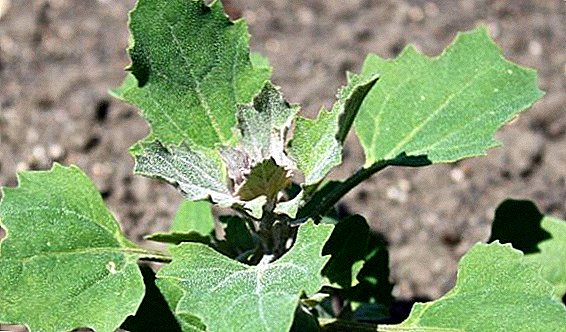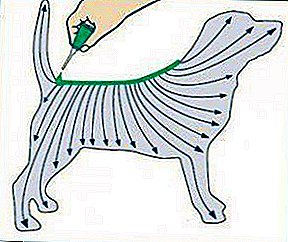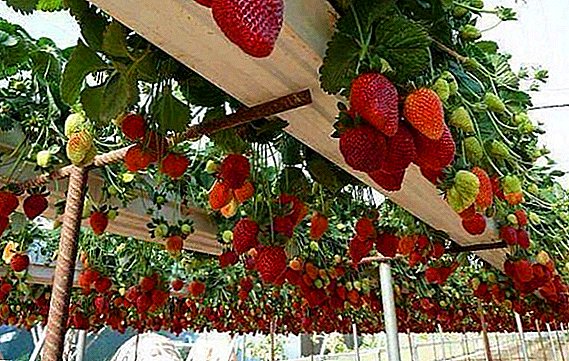 Royal jelly is the most valuable product in beekeeping. The unique healing and nutritional properties, the complex process of extraction led to a high market price for this product. Establishing the production of such milk in its own apiary is a difficult task, but very real (it is not about industrial scale, but about providing yourself and your family with a valuable product). As it turned out, the beekeeper will be able to produce royal jelly even at home.
Royal jelly is the most valuable product in beekeeping. The unique healing and nutritional properties, the complex process of extraction led to a high market price for this product. Establishing the production of such milk in its own apiary is a difficult task, but very real (it is not about industrial scale, but about providing yourself and your family with a valuable product). As it turned out, the beekeeper will be able to produce royal jelly even at home.
Did you know? The unique composition of royal jelly allows it to inhibit the growth of harmful microbes and bacteria, it is actively used for medical and cosmetic purposes.
How royal jelly appears, the nature of the process
Royal jelly bee (it is called native or natural) looks like jelly, has a white color, has a characteristic taste with a sour taste, a peculiar smell, and get it in a natural way. Worker bees produce milk (not older than 6 to 15 days old) with the help of glands (mandibular and pharyngeal). The product produced provides the larva with nutrition and is laid by bees in the mother liquor (200 to 400 mg).
 The composition of royal jelly surpasses in its indices the food of the larvae of worker bees hundreds of times (the worker bee lives 2-4 months, the uterus - up to 6 years).
The composition of royal jelly surpasses in its indices the food of the larvae of worker bees hundreds of times (the worker bee lives 2-4 months, the uterus - up to 6 years).
The technology for obtaining royal jelly involves the beekeepers using the biological characteristics of bees — in the absence of a uterus, to delay the queen cells and actively produce royal jelly. One family can lay from 9 to 100 queen cells at the same time (depending on the breed or race of bees and conditions). It is possible to get the worker bees to actively produce royal jelly if the uterus is removed and the larvae are planted in the family for feeding the new uterus.
Safety rules when working
The answer to the question of how to get high-quality royal jelly from bees will be a recommendation to strictly observe certain sanitary and hygienic standards. First of all, cut or selected queen cells should be stored in an airtight container in a refrigerator (+ 3 ° С) until their extraction and further use.
Important! At home, the ideal option would be to store royal jelly in the refrigerator and in its natural packaging - without removing it from the mother liquor. The shelf life of queen cells - a year.
If you simply remove the milk from the mother liquor, it will lose all of its miraculous qualities in two hours, so you need to know how to properly collect royal jelly.
For safe extraction of pure raw materials from queen cells, it is required:

Important! It is advisable to avoid contact with royal jelly with air and bright sunlight.
Basics of beekeeping, procuring of queen cells
The best time to get royal jelly is the beginning of summer (bribe in the midst, plenty of prairie, lots of young workers). To get more royal jelly, you need to select a larger number of queen cells.
There are several traditional ways of forming queen cells:
- "quiet change" (little queen cells);
- swarming (there are many queen cells, but there is a danger that the bees will fly away);
- "orphanhood" of the family (many queen mothers).
The third option for obtaining royal jelly is more preferable. Putting off the queens, one-day larvae (up to 60) can be planted in the family for feeding. Three days later, the selection process of milk.
The most commonly used methods are:
- Miller (since 1912). Four triangles of the honeycomb are fixed on the frame (not reaching 5 cm up to the bottom bar), placed between the two frames of the brood. The bees draw voschinu, and the uterus lays the larvae. The brood frame is removed, thinned and placed in a strong, untargent family. Bees begin to pull the queen cells. After three days, you can already collect royal jelly and put a new frame.
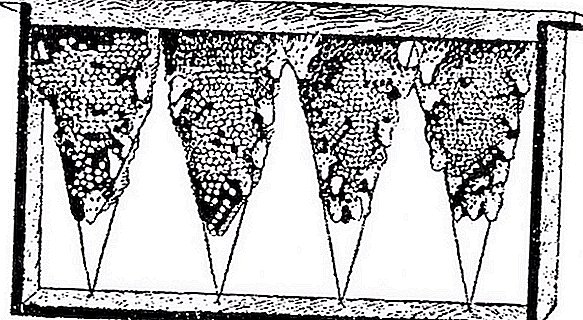
- Alley (published as early as 1882): cut into strips of honeycombs with four-day larvae, cut with a knife by half and widen the cells, thin the larvae. The strips are waxed to the honeycomb. In the strongest family, a uterus is taken in the morning and larvae are planted in the evening. Bees begin to rebuild the queen cells;
- a more progressive and used method - transfer of larvae in wax bowls: it is better to make independently of light and pure wax in a water bath (temperature + 70 ° С). To do this, you need a template made of wood with a diameter of 8 to 10 cm. Beforehand (you can put it in the refrigerator for half an hour), cool the disk, then immerse it in liquid wax several times (the bottom should be more massive), then cool it and, rotating, separate the bowl.
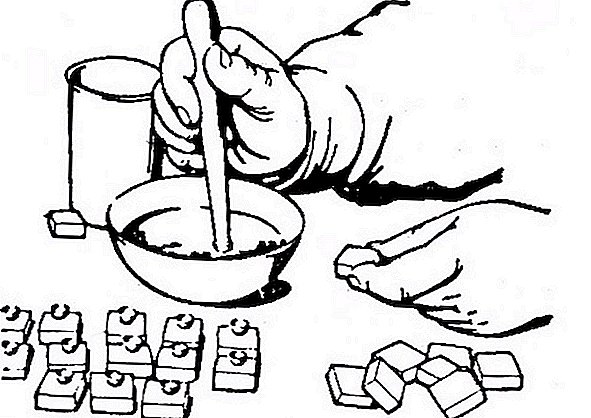
The next action will be the transfer (vaccination) of the larvae to the pan with a spatula (the operation is very responsible and difficult - it is necessary not to damage the larva). After three days you can remove the queen cells and expose new bowls;
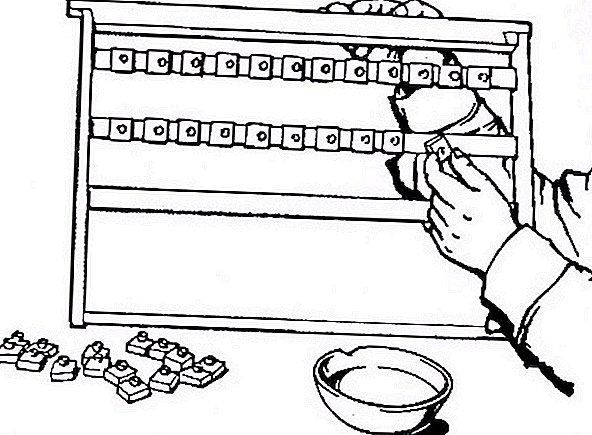
- Dzhenter's method: plastic honeycombs are used, and the selection of raw materials occurs without transfer of the larvae. The plastic bottom end with the larva is removed and attached to the frame in the hive (allows you to do without a spatula). The bribe from each such family (educator) is 7-8 g of milk daily.
Did you know? In the 1980s, beekeeper Karl Genter made a discovery that enabled millions of beekeepers in the world to produce royal jelly without transferring the larvae. This discovery is considered the fourth largest in beekeeping (after the frame hive, honey extractor and devices for the manufacture of honeycombs).
How to get royal jelly and what you need for it
Royal jelly is taken with a glass or plastic rod (can be removed immediately, can be collected for 6-7 days after storage in the refrigerator - royal jelly will not suffer from the cold). All larvae are pre-extracted. The raw material is placed in a refrigerator (where it can be stored for no more than 24 hours) in a special glass container made of brown opaque glass (preferably wax-treated from the inside) with a tight twist.
Did you know? In ancient Egypt, China, and Rome, royal jelly was called the balm of life.
Adsorbents (glucose (1: 25), honey (1: 100), vodka (1:20) are also used for preservation. But healing properties remain worse. At home, it is extremely difficult to adsorb and dry under vacuum.
 Extraction of bee milk requires inventory:
Extraction of bee milk requires inventory:
- scalpels, blades and knives - for trimming;
- glass plastic rods, pumps, syringes - to extract raw materials from the mother liquor;
- special glass packaging;
- lighting lamps;
- stand for fixing honeycombs at an angle.
Important! Organic glass can not be used, it can affect the composition of the milk.
Beekeepers secrets, how to get more royal jelly
Each beekeeper has his own approach to his hobby and his personal secrets how to get more royal jelly. There is no single opinion here. World beekeeping cannot give an unequivocal answer to the question of how fertilizing bees can affect royal jelly and its quantity, the number of queen cells, etc.
What you need and how to feed the bees
 In beekeeping, fertilizing of bees is practiced in the fall (when the main bribe is stopped), in winter and in early spring. Summer feeding in many countries producing honey is prohibited. There is an opinion that if a beekeeper seeks to get more royal jelly, then the family-teacher should be additionally fed with sugar syrup every other day (0.5 l each). Like it or not - you decide.
In beekeeping, fertilizing of bees is practiced in the fall (when the main bribe is stopped), in winter and in early spring. Summer feeding in many countries producing honey is prohibited. There is an opinion that if a beekeeper seeks to get more royal jelly, then the family-teacher should be additionally fed with sugar syrup every other day (0.5 l each). Like it or not - you decide.
Recipes cooking lure
Most beekeepers agreed that the universal form of complementary foods is sugar syrups. There are many recipes (as well as disputes - which water to use (soft or hard), whether to add vinegar or not).
Universal recipes for feeding:
- syrup: one part of water - two parts of sugar (for thick, if vice versa - liquid, equal parts - medium). Cook in an enamel pot. Boil water, turn it off and dissolve sugar in it. Serve the bees with warm syrup (20-30 ° C);
 honey filled - honey dissolved in water (1 part of water and 10 parts of honey - optimal density). Honey should be used only from healthy families;
honey filled - honey dissolved in water (1 part of water and 10 parts of honey - optimal density). Honey should be used only from healthy families;- Protein top dressing - 400-500 g of honey, 1 kg of pollen, 3.5 kg of powdered sugar. Knead into cakes and in cellophane with holes put on the frame;
- protein substitutes (Gaydak mixture, soyapin, Bulgarian protein mixture, etc.);
- mixture - pollen (grind in a blender), sugar syrup (10 l, 1: 1), preparation "Pchelodar" (20 g).
Important! Unrefined yellow granulated sugar is unsuitable for feeding bees.
Many experts still recommend to use more natural complementary foods - honey, pollen and sugar syrup (65% sugar) in boiled water. This is an accepted standard in the world beekeeping practice.





 honey filled - honey dissolved in water (1 part of water and 10 parts of honey - optimal density). Honey should be used only from healthy families;
honey filled - honey dissolved in water (1 part of water and 10 parts of honey - optimal density). Honey should be used only from healthy families;